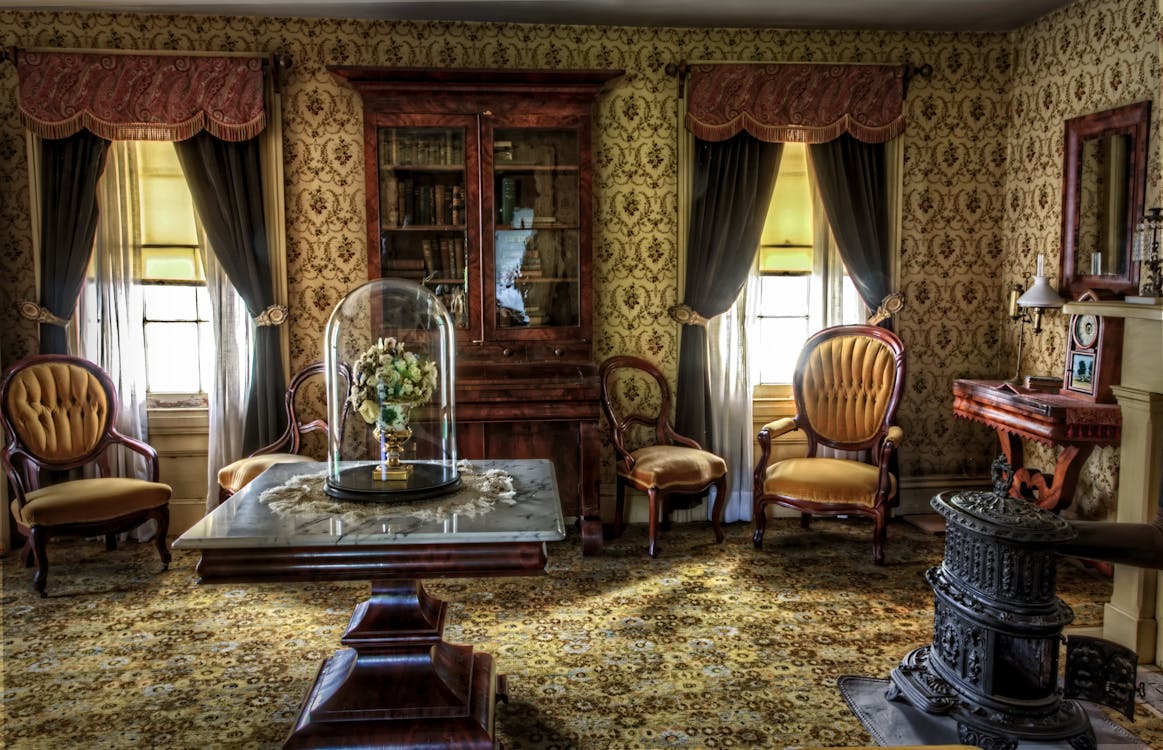
The History of Window Coverings: From Ancient Civilizations to Modern Homes
Home window treatments have actually become part of human history for thousands of years, progressing from primitive products to the advanced styles we delight in today. While we commonly appreciate exactly how home window treatments beautify our homes, few realize the fascinating trip that brought them below. Allow's travel through time and explore just how societies across the world have actually formed the development of window curtains, shades, and window drapes right into what we currently think about vital parts of home design.
Old Beginnings: Function Before Fashion
The earliest window coverings weren't concerning making a home look stylish; they were created out of need. Ancient Egyptians are thought to have used reeds and papyrus to cover openings in their homes, giving shade and some protection from the unrelenting sun. These treatments were lightweight and very easy to change, ideal for the severe desert atmosphere.
Meanwhile, across the Mediterranean, the Greeks and Romans introduced fabrics like linen and wool to their insides. These early forms of window drapes hung freely over doorways and windows, assisting to regulate interior temperatures and add a touch of personal privacy. Roman architecture later affected how home window therapies were created to function not equally as a guard, however as a glamorous declaration in wealthier households.
The Middle Ages: Heavy Fabrics and Practical Uses
As European castles and homes grew in size, windows ended up being bigger-- therefore did the need for much better protection. During the Middle Ages, heavy materials like velvet and brocade were favored for their ability to obstruct drafts and maintain warmth. These thick drapes were not totally ornamental; they served as vital components for heat and convenience in stone-built structures.
Window treatments in this period were usually rich in color, intricately stitched, and commonly doubled as makeshift walls in large halls. Attractive patterns and lush textiles represented social condition, making window coverings a valuable part of indoor style also then.
The Renaissance: Artistry Meets Practicality
The Renaissance sparked a restored passion in art, society, and home style. With innovations in weaving and fabric manufacturing, house owners accessed to a broader range of fabrics and patterns. Home window treatments ended up being an artistic expansion of a home's visual, commonly echoing the grandeur located in Renaissance paintings and sculptures.
Tapestries and embroidered window curtains were a staple of high end homes, their styles informing stories of mythological, religious, or everyday life scenes. The trend of using drapes not just for home windows however also around beds and doorways became prevalent, weding function and charm.
The 18th and 19th Centuries: Refinement and Innovation
As the Industrial Revolution got momentum, textile production blew up. Fabrics ended up being much more cost effective and obtainable to the middle course, resulting in an era where home window treatments were not just for the wealthy. Technologies in poles, rings, and pulley systems allowed for the very early versions of what would certainly later inspire Hunter Douglas motorized blinds.
Throughout the Victorian period, the style of home window therapies became even more split and ornate. Homes flaunted heavy window drapes layered over shoelace sheers, with tassels, fringe, and elaborate tiebacks finishing the look. Home window coverings were no more just sensible however essential elements of interior design, showing the property owner's preference and status.
The 20th Century: Embracing Minimalism and Technology
The 20th century brought transformations. The clean lines of modernism changed preferences from luxury to simplicity. House owners moved away from hefty drapery toward lighter, extra functional designs that highlighted the style of the home rather than frustrating it.
As modern technology advanced, so did home window treatments. Innovations caused the creation of products like Hunter Douglas motorized shades, using home owners benefit and exact light control at the touch of a switch. This technological leap was more than a deluxe; it stood for a new era of living where comfort, style, and automation integrated easily.
Textile choices also ended up being a lot more varied, with artificial products giving economical, long lasting, and easy-to-maintain alternatives. This change permitted people to trying out various appearances and capabilities, relying on the demands of each area.
Today's Window Coverings: A Blend of Style and Smart Living
Today, home window therapies are a seamless blend of form and function. Whether you prefer traditional window curtains or cutting-edge Hunter Douglas motorized shades, the range of options is broader than ever before. Modern house owners can select coverings that perfectly match their way of living, décor, and sustainability choices.
Smart home assimilation has taken window treatments to a completely new degree. Solutions linked to mobile phones or voice-activated assistants offer the capacity to readjust shades based upon time of day, temperature, or even your state of mind. And while motorized remedies like Hunter Douglas motorized blinds are at the center of this motion, there remains a deep admiration for the traditional elegance that standard drapes and curtains offer a space.
Eco conscious selections are also obtaining popularity, with products like bamboo, natural cotton, and recycled materials coming to be essential consider acquiring decisions. Sustainability, when a second thought, is now a leading pattern in interior decoration, especially when it pertains to home window treatments.
The Ever-Evolving Art of Dressing Windows
Window treatments have absolutely come a long way because the days of papyrus screens and woolen towels. From the hefty, elaborate view window drapes of medieval Europe to the streamlined, technology-driven options offered today, their advancement mirrors the broader modifications in culture, technology, and style choices.
In every period, the purpose behind window therapies has actually continued to be consistent-- using defense, convenience, and beauty-- however the products, modern technology, and layouts have actually continuously developed to satisfy the altering demands of the moments. As homes come to be smarter and lifestyles remain to change, it's thrilling to visualize what the future of window treatments will look like.
Follow us for more exciting explorations into home layout fads, and remain tuned for even more tales that celebrate the ageless charm and advancement discovered in every corner of your living space!
 Edward Furlong Then & Now!
Edward Furlong Then & Now! Michael Bower Then & Now!
Michael Bower Then & Now! Soleil Moon Frye Then & Now!
Soleil Moon Frye Then & Now! Dawn Wells Then & Now!
Dawn Wells Then & Now! Morgan Fairchild Then & Now!
Morgan Fairchild Then & Now!